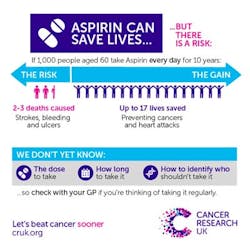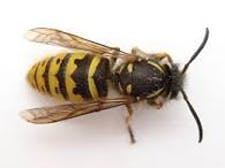Breast Cancer Update: Some recent findings are very interesting
October is Breast Cancer Awareness Month
Breast Cancer Awareness Month is an annual campaign to increase awareness of the disease. There are numerous resources to help with prevention, diagnosis, and treatment of breast cancer. This article will highlight some recent news in this area.
Bisphosphonates are often used to treat osteoporosis in postmenopausal women. An examination of data from two randomized clinical trials finds that three to four years of treatment with bisphosphonates to improve bone density is not linked to reduced risk of invasive postmenopausal breast cancer.1 Some studies have proposed that bisphosphonates may have antitumor and antimetastatic properties. Some observational studies have suggested bisphosphonates may protect women from breast cancer.2 Findings of one study proposed that women using bisphosphonate had a significant reduction in breast cancer risk after at least one year of use.2,3 More studies are needed.4
On a positive note, findings suggest that aspirin could play role in reducing breast cancer mortality. Researchers discovered that women who were prescribed aspirin regularly before being diagnosed with breast cancer are less likely to have cancer that metastasized to the lymph-nodes than women who were not on prescription aspirin. These women are also less likely to die from their breast cancer.4
Another study showed that prophylactic aspirin use for a minimum of five years at doses between 75 and 325 mg/day appears to have favorable benefit–harm profile. Longer use is likely to have greater benefits. Further research is needed to determine the optimum dose and duration of use, to identify individuals at increased risk of bleeding, and to test effectiveness of Helicobacter pylori screening–eradication before starting aspirin prophylaxis.6 Further studies are being conducted in Ireland.7
On the genetic front, women with a rare gene mutation and associated hereditary endocrine disease are at an increased risk for breast cancer.8 The MEN1 gene is the official name of the gene “multiple endocrine neoplasia 1.”9 The MEN1 gene provides directions for making a protein called menin. This protein acts as a tumor suppressor, which means that it stops cells from growing and dividing too fast or in an unrestrained way. Recent studies in animals suggest that MEN1 is involved in breast-cancer initiation. Through its encoding of menin, a coregulator of estrogen receptor α, MEN1 has been implicated in breast-cancer progression. 8 MEN1 patients are susceptible to various benign and malignant tumors, such as parathyroid tumors, duodenopancreatic neuroendocrine tumors, and pituitary adenomas. They are more likely to have breast cancer than members of the general population. In addition, they tend to develop breast cancer at a much younger age.
Another study in the same issue of the New England Journal of Medicine states the risk of breast cancer for female PALB2 mutation carriers, as compared with the general population, was eight to nine times as high among those younger than 40 years of age, six to eight times as high among those 40 to 60 years of age, and five times as high among those older than 60 years of age.10 The data suggest the breast-cancer risk for PALB2 mutation carriers may overlap with that for BRCA2 mutation carriers.
During pregnancy, certain hormones trigger specialized mammary stem cells to create milk-producing cells essential to lactation. Scientists have found that mammary stem cells associated with the pregnant mammary gland are related to stem cells found in breast cancer.11 While having a child reduces a woman's risk of developing breast cancer later in life, there is also an increased short-term risk for the development of a highly aggressive form of breast cancer following each pregnancy. The current study suggests that molecules important for stem cell behavior during pregnancy may contribute to these more aggressive pregnancy-associated breast cancers, a possibility the researchers plan to investigate further.
Postmenopausal women who in the past four years had undertaken regular physical activity equivalent to at least four hours of walking per week had a lower risk for invasive breast cancer compared with women who exercised less during those four years.12 According to the authors, results suggest a decrease in risk associated with recent recreational physical activity even of modest levels. Also, the presence of tumor-infiltrating lymphocytes (TILs) is associated with a reduced risk of death and distant recurrence in women with triple-negative breast cancer (TNBC).13 In addition to TNM staging, evaluating lymphocytic infiltration at the time of routine histopathologic assessment improves outcome prediction in patients with triple negative breast cancer.
And last, but not least, wasp venom may be used to in a new therapy for breast cancer.14 The venom is used to kill the tumor cells. Due to its high toxicity and lack of cell specificity, a novel delivery system was devised. It contains a carrier polymer with two components: a peptide that is bound to a tumor cell receptor and the cytotoxic peptide of the wasp venom. The results seem promising.
References
- Hue TF, Cummings SR, Cauley JA, Bauer DC, Ensrud KE, Connor EB, and Black DM. Effect of Bisphosphonate Use on Risk of Postmenopausal Breast Cancer. JAMA, Internal Medicine, 2014; DOI: 10.1001/jamainternmed.2014.3634.
- Bisphosphonates May Protect Against Breast Cancer. Contemporary OB/GYN; Sep2012, Vol. 57 Issue 9, p16.
- Liu Y, Zhao S, Chen W, Hu F, Zhu L, Zhang Q, Zhao Y. Bisphosphonate use and the risk of breast cancer: a meta-analysis of published literature. Clin Breast Cancer. 2012 Aug;12 (4):276-81. doi: 10.1016/j.clbc.2012.04.003. Epub 2012 May 22.
- http://scienceblog.cancerresearchuk.org/2014/08/06/aspirin-and-cancer-not-quite-but-nearly/.
- Barron TI, Flahavan EM, Sharp L, Bennett K, and Visvanathan K. Recent Prediagnostic Aspirin Use, Lymph Node Involvement, and 5-Year Mortality in Women with Stage I–III Breast Cancer: A Nationwide Population-Based Cohort Study. Cancer Res August 1, 2014 74:4065-4077; doi:10.1158/0008-5472.CAN-13-2679.
- Cuzick J, Thorat MA, Bosetti C, et al. Estimates of benefits and harms of prophylactic use of aspirin in the general population. Ann Oncol (2014) doi: 10.1093/annonc/mdu225. First published online: August 5, 2014.
- http://www.cancer.ie/research/collaborative-cancer-research-centres/breast-predict#sthash.sgWdMING.dpbs.
- International Breast Cancer in MEN1 Study Group, Commentary. Breast-Cancer Predisposition in Multiple Endocrine Neoplasia Type 1. N Engl J Med 371; August 7, 2014, 583-584.
- http://ghr.nlm.nih.gov/gene/MEN1.
- Antoniou AC, Casadei S, Heikkinen T, et al. Breast-Cancer Risk in Families with Mutations in PALB2. New England Journal of Medicine, 371(6), 497-506, Aug 2014. http://www.nejm.org/doi/full/10.1056/NEJMoa1400382.
- Desgrosellier JS, Lesperance J, Seguin L, et al. Integrin αvβ3 Drives Slug Activation and Stemness in the Pregnant and Neoplastic Mammary Gland. Developmental Cell, Volume 30, Issue 3, 11 August 2014, Pages 295-308.
- Fournier A, Dos Santos G, Guillas G, et al. Recent Recreational Physical Activity and Breast Cancer Risk in Postmenopausal Women in the E3N Cohort. Cancer Epidemiol Biomarkers Prev; 1–10, Aug 2014.
- Tumor-Infiltrating Lymphocytes Linked to Better Prognosis in Triple-Negative Breast Cancer. Medscape. Aug 05, 2014.
- Miguel Moreno, Esther Zurita, Ernest Giralt. Delivering wasp venom for cancer therapy. Journal of Controlled Release, 2014; 182: 13 DOI: 10.1016/j.jconrel.2014.03.005.





